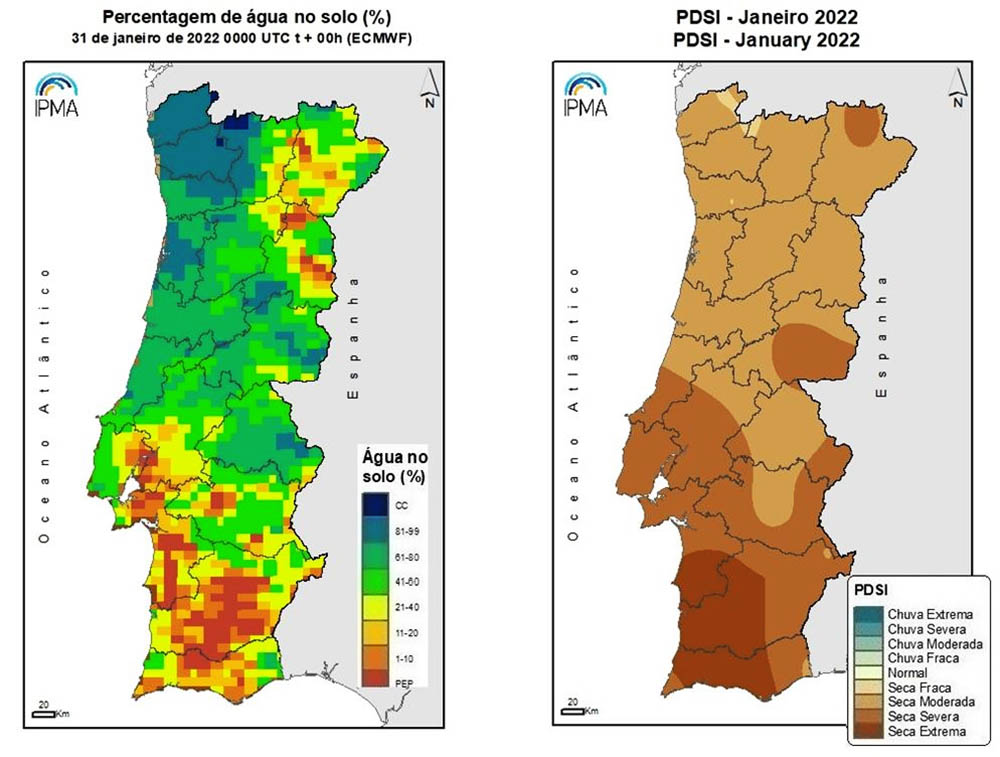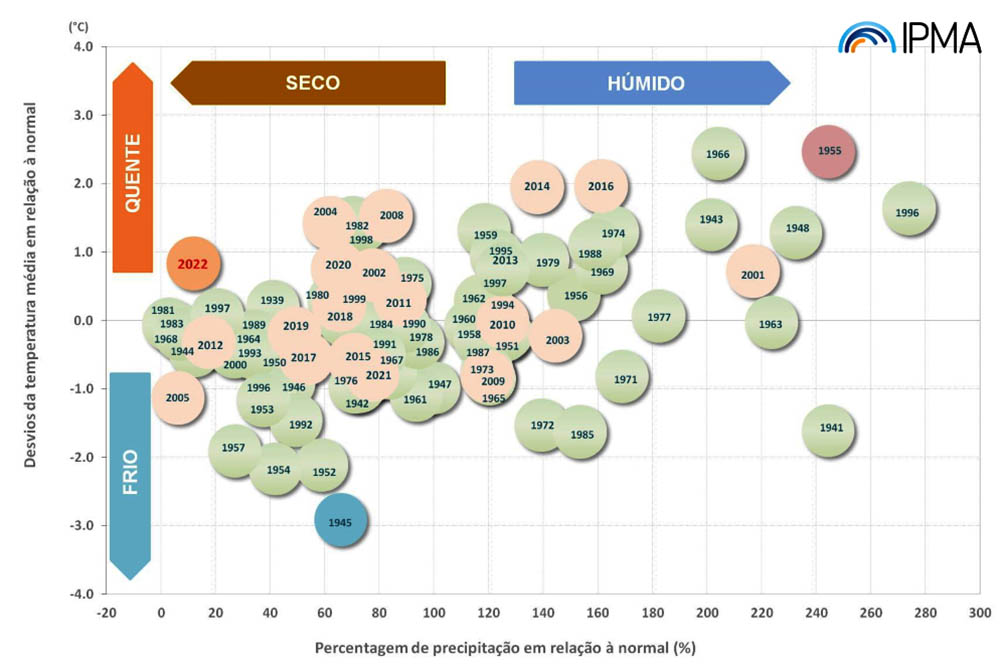Last January was hot and very dry in mainland Portugal, announced the Portuguese Institute of the Sea and Atmosphere (IPMA) in its climate report.
One of the most relevant data has to do with the maximum temperature. According to the IPMA, «the maximum air temperature value was the highest in the last 90 years, with an average value of 15.29 °C, + 2.20 °C, compared to the normal value 1971-2000». In the opposite direction, the average value of minimum air temperature, 4.02 °C, was 0.52 °C lower than the normal value.
The mean value of the mean air temperature, 9.65 °C, was higher than the normal value 1971-2000 (+ 0.84 °C), this being the 5th warmest January since 2000 (highest: 2016, 10.78 °C).
The IPMA adds that the month was “characterized by daily values of maximum air temperature almost always higher than the monthly average value, with emphasis on the periods from 1 to 3 and from 27 to 31 January, with deviations greater than 4 °C” .
The extreme values of maximum air temperature for the month of January were even exceeded or equaled in about 15% of the meteorological stations.
The minimum temperature also started with values well above the average, but from the 13th onwards, the daily values were almost always lower, highlighting the consecutive period of 10 days, 17th to 26th of January.
In terms of precipitation, last month was the 6th driest January since 1931 (driest: 1935) and the 2nd driest since 2000 (driest: 2005).
The average value of the amount of precipitation, 13.9 mm, was much lower than the normal value 1971-2000, corresponding to only 12 %.
The IPMA states that, in about 75% of the territory, the values of the amount of precipitation in this month were less than 10 mm.
As a consequence of the lack of rain, the soil water percentage index (SMI) shows a significant decrease compared to the end of December throughout the territory, with values below 20% in the Northeast and South regions. "In many places in these regions, the point of permanent wilting has already been reached."
The lack of rain and higher temperatures led to “a very significant worsening of the meteorological drought situation, with an increase in area and intensity”.
So that, at the end of last month, the entire territory was in drought, with 1% in mild drought, 54% in moderate drought, 34% in severe drought and 11% in extreme drought.
As can be seen in the images above, the zone in extreme drought encompasses more than two thirds of the Algarve, the western half of the district of Beja and the southernmost part of the district of Setúbal.





















Comments